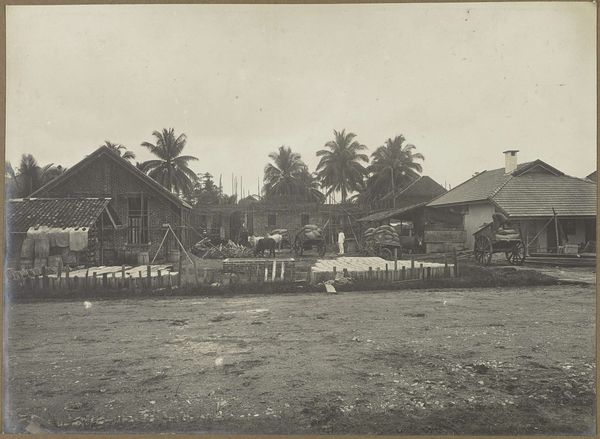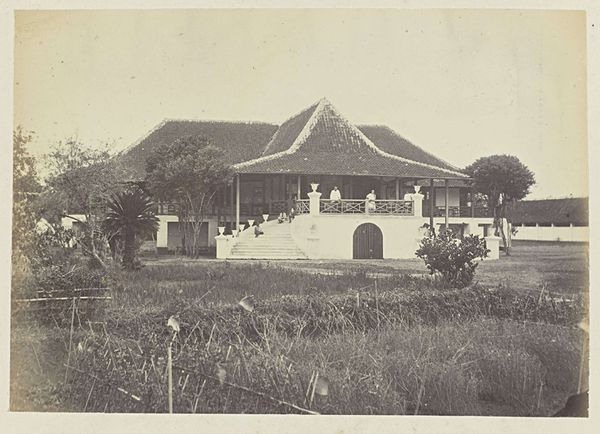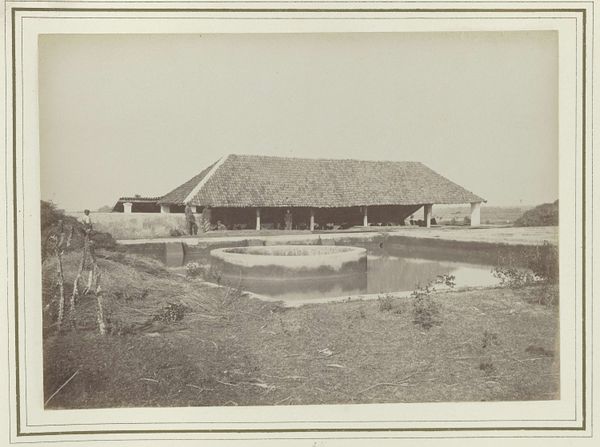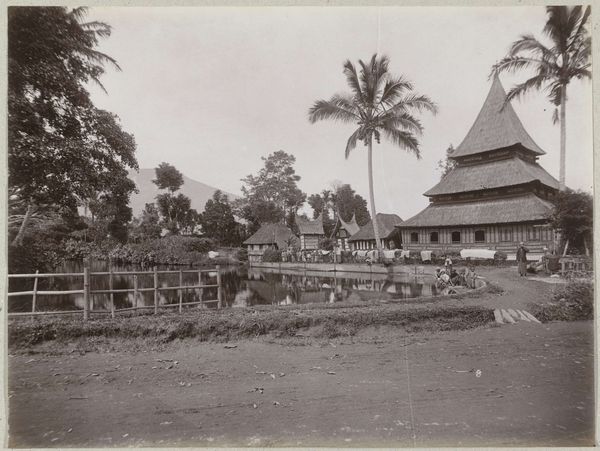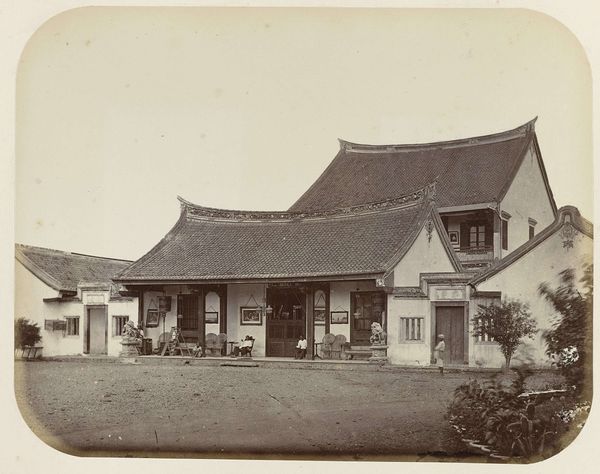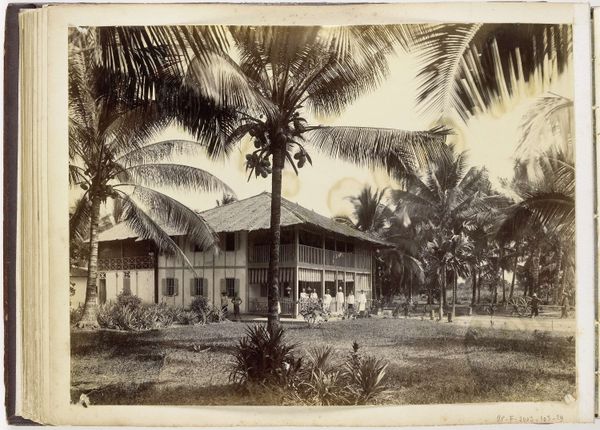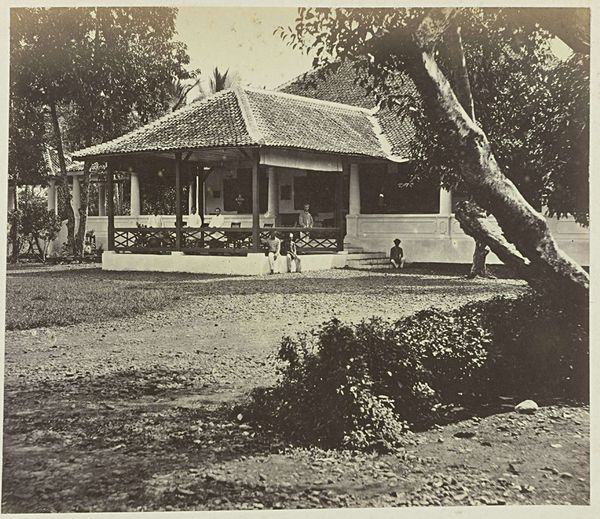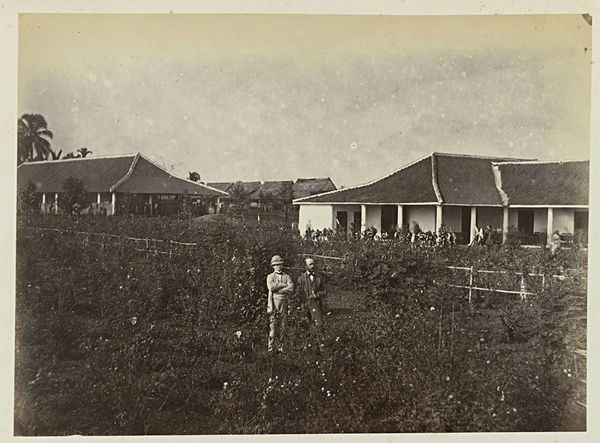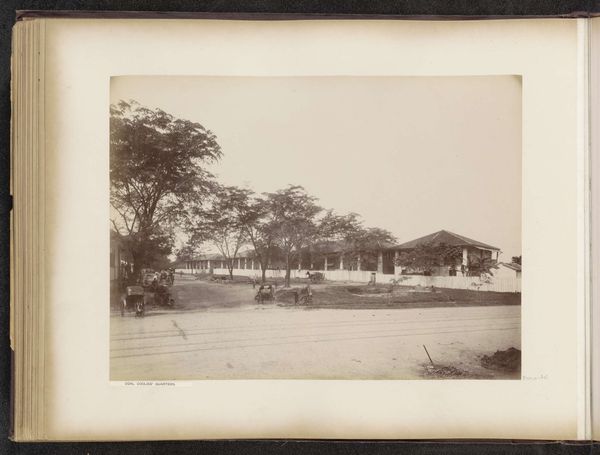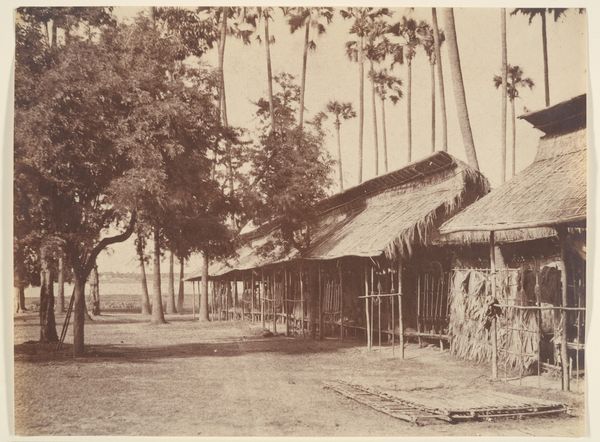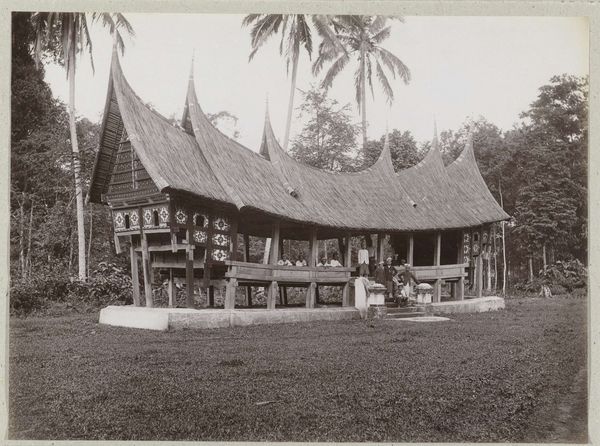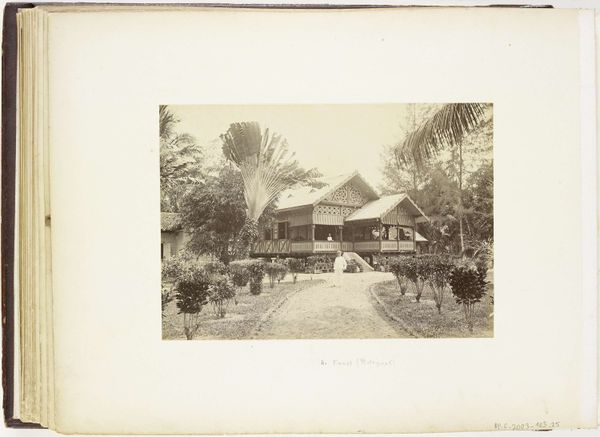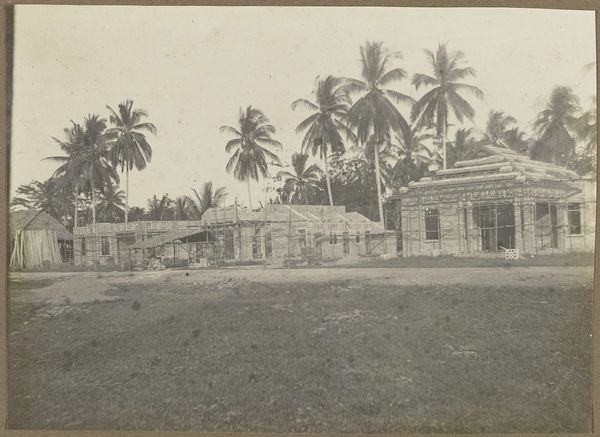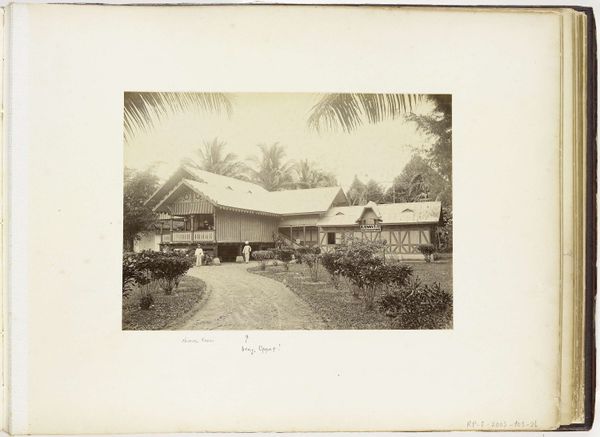
print, photography, site-specific, albumen-print, architecture
# print
#
asian-art
#
landscape
#
photography
#
orientalism
#
site-specific
#
albumen-print
#
architecture
#
realism
Dimensions: height 227 mm, width 322 mm
Copyright: Rijks Museum: Open Domain
Curator: This albumen print, created around 1900 by Heinrich Ernst & Co., offers a glimpse into the "View of the Dwelling House of Assistants, Langkat Sumatra," now residing in the Rijksmuseum collection. It presents a compelling case study in colonial architecture and its photographic representation. Editor: Immediately, I'm struck by how the subdued tones and precise composition convey both the serenity and the rigid formality inherent in colonial life. The building itself, with its raised structure and overhanging roof, seems both inviting and remote. Curator: Absolutely. The architectural style speaks volumes about adaptation and assertion. The raised structure is functional, likely intended to mitigate humidity and pests, but it also symbolically elevates the European residents above the local landscape. This visual separation underscores the power dynamic at play during that period. Editor: The building's style evokes the tropical vernacular and European adaptation through an interesting synthesis, where elements of local building tradition seem molded to project authority. I note how that distinct tropical plant is centered to appear monumental, possibly intended to express European transformation of the natural world as gardens of plenty. Curator: Exactly, the positioning of the building and surrounding gardens in the photograph constructs an idealised image of colonial life. What is missing speaks volumes, as we are given no glimpses into the labor that upheld the very infrastructures and plantations that afforded such living spaces. This is not necessarily a record of true conditions, but rather, photographic proof serving colonial desires. Editor: It brings to mind those Edenic depictions meant to not only sell dreams of colonial potential, but to simultaneously hide their darker consequences through highly selective depictions. This photo’s artistry functions to reinforce the illusion. Curator: The photograph would certainly serve such purposes within the context of colonial exhibition and dissemination, projecting a vision of productive ease while promoting narratives of national pride and capitalist endeavor. Editor: Examining this scene leaves me reflecting on how even seemingly innocuous landscape photography can subtly embed layers of political and cultural encoding, still carrying its load of cultural intent across the years.
Comments
No comments
Be the first to comment and join the conversation on the ultimate creative platform.
